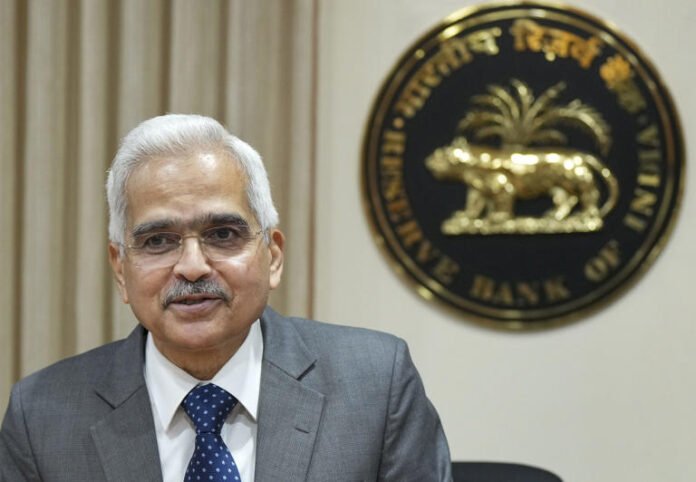The Reserve Bank of India (RBI) has taken a significant step by reducing the Cash Reserve Ratio (CRR) by 50 basis points, lowering it from 4.5% to 4%. This move, expected to release ₹1.16 trillion into the banking system, is poised to impact interest rates, borrowing costs, and economic growth dynamics. Here’s a closer look at the ripple effects of this decision on borrowers, banks, and the broader economy.
How Borrowers Will Benefit
1. Increased Liquidity Boosts Lending Capacity
The CRR cut infuses liquidity into the banking system, enabling banks to increase their lending capabilities. Borrowers across various segments—home loans, car loans, personal loans, and corporate credit—can expect an easier flow of funds as banks compete to extend credit. This measure is particularly crucial as it aligns with the RBI’s goal of spurring economic activity amid signs of a slowdown.
2. Lower Interest Rates on Loans
Enhanced liquidity is expected to lead to a reduction in the cost of funds for banks. This, in turn, could prompt banks to lower their lending rates, especially loans linked to the Marginal Cost of Funds-Based Lending Rate (MCLR). A decline in interest rates translates into reduced Equated Monthly Installments (EMIs) for borrowers. However, the extent and timing of these reductions will depend on individual banks’ policies and their assessment of market conditions.
3. Stability in Repo-Linked Loans
Since the RBI has kept the repo rate unchanged at 6.5%, borrowers with loans tied to the repo rate will not see immediate changes in their EMIs. This stability offers a reprieve to borrowers, particularly those with home loans or business loans pegged to the central bank’s benchmark rate.
4. Improved Affordability for Big-Ticket Purchases
Sectors such as real estate and automobile are likely to benefit from lower borrowing costs. With banks passing on the liquidity advantage to customers, prospective homebuyers and car buyers may find loans more affordable, potentially boosting demand in these key industries.
5. Accessibility of Credit for MSMEs
Micro, Small, and Medium Enterprises (MSMEs), which rely heavily on bank credit, are expected to benefit from improved liquidity. Easier access to loans can help these businesses address working capital needs and invest in growth, further contributing to economic recovery.
Implications for Banks
1. Enhanced Liquidity and Profitability
The release of ₹1.16 trillion boosts banks’ liquidity reserves, allowing them to lend more freely. This could improve their Net Interest Margins (NIMs), a key profitability metric. Banks with a larger focus on retail lending are particularly well-positioned to benefit from this measure.
2. Positive Market Sentiment
The banking sector has already responded positively to the CRR cut, with stocks of major banks witnessing an uptick. Analysts view this as a sign of confidence in the RBI’s measures to support financial stability and economic growth.
3. Competitive Interest Rates
With more liquidity, banks might engage in competitive interest rate adjustments to attract borrowers, especially in the retail and SME segments. This competitive environment can be advantageous for consumers seeking loans.
4. Reduced Deposit Rates
While borrowers benefit from lower loan rates, depositors might face marginal reductions in deposit rates as banks adjust to increased liquidity. This could affect savers but is unlikely to impact the broader lending landscape significantly.
Broader Economic Impact
1. Stimulating Growth Amid a Slowdown
India’s GDP growth has dipped to 5.4%, its lowest in seven quarters, raising concerns about the economy’s trajectory. The CRR reduction aims to counter this slowdown by enhancing credit flow, boosting consumption, and encouraging investment in key sectors.
2. Support for Key Industries
Increased credit availability is expected to benefit credit-intensive sectors such as:
- Real Estate: Easier home loans could stimulate housing demand.
- Automobiles: Affordable car loans may boost vehicle sales.
- Consumer Durables: Lower EMIs can drive purchases of high-value items like appliances and electronics.
- Infrastructure: Access to cheaper credit can accelerate ongoing and planned projects.
3. Balancing Growth and Inflation
The RBI’s decision reflects a cautious balancing act. While fostering economic expansion, the central bank remains vigilant about inflationary pressures. By maintaining the repo rate, the RBI signals its intent to ensure growth does not come at the expense of price stability.
4. Strengthening Financial Stability
The CRR cut aligns with the RBI’s broader objectives of ensuring financial system resilience. Increased liquidity can bolster banks’ ability to meet credit demands, absorb economic shocks, and maintain stability in the face of global uncertainties.
Potential Challenges
1. Inflationary Risks
While the CRR cut enhances liquidity, it may exert upward pressure on inflation if the additional money supply leads to excessive demand. The RBI’s decision to hold the repo rate steady indicates its awareness of this risk.
2. Delayed Impact on Borrowers
The transmission of benefits from the CRR cut to borrowers depends on banks’ readiness to adjust their lending rates. Some borrowers may experience a lag before witnessing tangible reductions in loan costs.
3. Deposit Rate Reductions
Savers could face lower returns on fixed deposits as banks recalibrate deposit rates in response to increased liquidity. While this may not directly impact borrowers, it could influence savings behavior in the economy.
Sectoral Analysis
Real Estate
The sector is poised for a revival as lower home loan rates improve affordability for buyers. Developers may also find it easier to secure project financing.
Automobiles
Easier access to car loans could drive sales, particularly in the passenger and commercial vehicle segments, which have been recovering from pandemic-induced slumps.
MSMEs
Enhanced credit flow can help small businesses expand operations, hire more workers, and invest in technology, contributing to overall economic recovery.
Consumer Durables
Lower EMIs could spur demand for high-ticket items, benefiting manufacturers and retailers in this segment.
The RBI’s 50 basis point CRR cut is a strategic move designed to address the dual challenges of slowing growth and inflationary pressures. By injecting ₹1.16 trillion into the banking system, the central bank aims to stimulate credit flow, support key sectors, and foster economic resilience.
For borrowers, the CRR cut promises potential relief in terms of lower interest rates and improved access to credit. Banks, on the other hand, stand to benefit from enhanced liquidity and profitability. However, the success of this measure hinges on its effective implementation and the banking sector’s responsiveness.
As the economy navigates this critical juncture, the RBI’s focus on liquidity management, financial stability, and balanced growth underscores its commitment to steering India towards sustained recovery and development.



